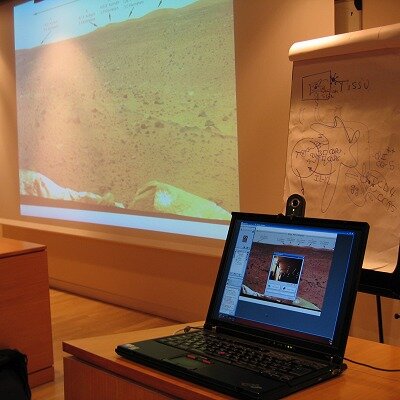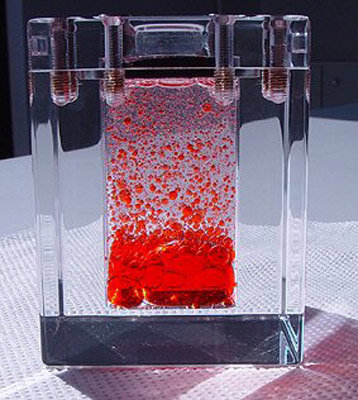Education programme
ARISS
ARISS is an international association of amateur radio societies of countries participating in the International Space Station. For Astrolab, the specific objectives of ARISS were:
- to provide real time radio transmissions from the Space Station during which pupils in German and Swiss primary schools put questions to ESA astronaut Thomas Reiter.
- to build, develop and maintain amateur radio activities on the International Space Station.
Among the children chosen were the winners of national competitions set up by ESA’s Education Office. The ground stations were provided by local amateur radio clubs.

Lesson from space
The theme of the fourth DVD in the Lessons from space series is robotics. Lesson 4 was produced with support and input from ESA astronauts, robotic experts, teachers and their pupils from schools in Germany, Sweden, Switzerland, and the United Kingdom and features footage of demonstrations from the Astrolab mission.

E-learning session
An e-learning session was scheduled as an "Earth-based" lecture during which a live link-up was made with ESA astronaut Thomas Reiter on the International Space Station. The lecture was presented to European university students following the EuMAS Masters Programme in Aeronautics and Space by Dr. Hubertus Thomas of the Max-Planck-Institute in Garching, Germany. The lecture was about plasma crystals and complex plasmas, with reference to the PK-3+ plasma crystal experiment that was performed during Astrolab.
Thomas demonstrated the PK-3+ hardware and the students put questions to Thomas Reiter.

Oil Emulsion
This experiment was carried out by school pupils (11-14 years old) on Earth and by Thomas during Astrolab. The space section of ‘Oil Emulsion’ was filmed and downlinked. This experiment highlights how an oil and water emulsion behaves differently in weightlessness and on Earth. A sealed container holding two immiscible fluids, clear oil and ink-coloured water, were shaken until the two fluids slightly mixed. The fluids’ behavior in space were filmed within defined time slots during a two weeks. The data was down linked and the results were shown in a childrens programme on German public television. The different kinds of segregation that occur during the experiment, in space and on Earth, could be observed and explained by teachers. The Oil Emulsion experiment was introduced by DLR and is a cooperation between the German and European Space Agencies.


